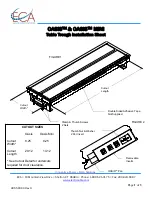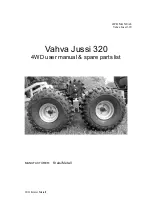
www.zookdisk.com
Serving America, Central & South America
16809 Park Circle Drive, Chagrin Falls,
Ohio 44022 USA
Toll Free: +1 800 543 1043
Phone: +1 440 543 1010
E-mail: [email protected]
Serving Europe, Middle East & Africa
Navigation House, Bridge Street
Killamarsh, Sheffield,
S21 1AL UK
Phone: +44 (0) 1909 560999
E-mail: [email protected]
Serving Canada
4400 South Service Rd,
Burlington, Ontario L7L 5R8 CA
Toll Free: +1 800 370 6057
Phone: +1 905 681 2885
E-mail: [email protected]
Serving Asia Pacific
Unit No.23A-05, Menara Landmark, No.12,
Jalan Ngee Heng
80000 Johor Bahru, Johor, Malaysia
Phone: +60 (7) 2910099
E-mail: [email protected]
Page 2 of 4 RT2_InstallationGuide_022219
Safety
Through
Knowledge
and
Performance
INSTALLATION INSTRUCTIONS
Graphite and Metal Rupture Disk Holders
Rupture Disk Series: RT2, RT2T, RE2, RE2T and Variants
INSTALLATION PROCEDURE
To achieve accurate burst pressures and a leak-free joint, several steps are required. It is imperative that a
proper bolt-up procedure is applied.
1) Inspect the Companion Flanges and Holder for cleanliness, damage and alignment:
a. Before installing the assembly into the system, ensure that the companion flange and holder
sealing surfaces are clean and free from all rust, corrosion, and foreign material. The allowable
imperfections in the flange gasket surface should not exceed the depth of the surface finish
grooves, and that the radial marks are no deeper than the depth of the flange surface finish and
less than 50% in length of the overall gasket sealing surface width.
b. To assure proper sealing of the assembly and flange gaskets parallelism, flatness, and waviness
should be within 0.008” (0.2mm) or less.
2) Check disk condition and specification prior to inserting the disk between the inlet and outlet insuring
that ALL FLOW ARROWS ARE POINTING IN THE PROPER DIRECTION. Do not lift the disk using
the disk tag – handle disk at the rim / edge.
WARNING: If the rupture disk is installed upside down, the burst pressure may exceed the marked
burst pressure. PAY CLOSE ATTENTION TO THE DIRECTIONAL ARROWS ON THE RUPTURE
DISK ASSEMBLY
3) Install new gaskets between the rupture disk assembly and the companion flanges. ZOOK
recommends compressed fiber gasket no greater than 1/8”. The user is cautioned to select a gasket
material that is suitable for the intended service and will resist “cold flow”. In the event of cold flowing
of the gaskets, the assembly torque will relax, which can result in erratic bursting of the rupture disk
and/or leakage.
4) Do not apply any compounds to the gasket or seating surfaces.
5) Reinstall companion flange studs and nuts, making sure they are free of any foreign matter, and
well lubricated. Lubricate the nut bearing surfaces as well. Lubrication is not required if PTFE coated
fasteners are used.
6) Run-up all nuts finger tight while maintaining parallelism
7) Determine the recommended bolting torque from Table 1.
8) Using a calibrated torque wrench, apply torque incrementally in a minimum of three (3) passes
[30%, 60%, 100% of specified recommended torque] using a crossing pattern tightening sequence
(see diagrams below). After following this sequence, a final tightening should be performed using a
circumferential pattern moving bolt-to-bolt to ensure that all bolts have been evenly torqued.
9) Verify parallelism is in accordance with 1) a. above.
10) Torqueing loss is inherent in any bolted joint. The combined effects of bolt relaxation, gasket
creep, vibration in the system, thermal expansion and elastic interaction during bolt tightening
contribute to torque loss. Companion flange torque values should be verified periodically at the
system temperature.






















